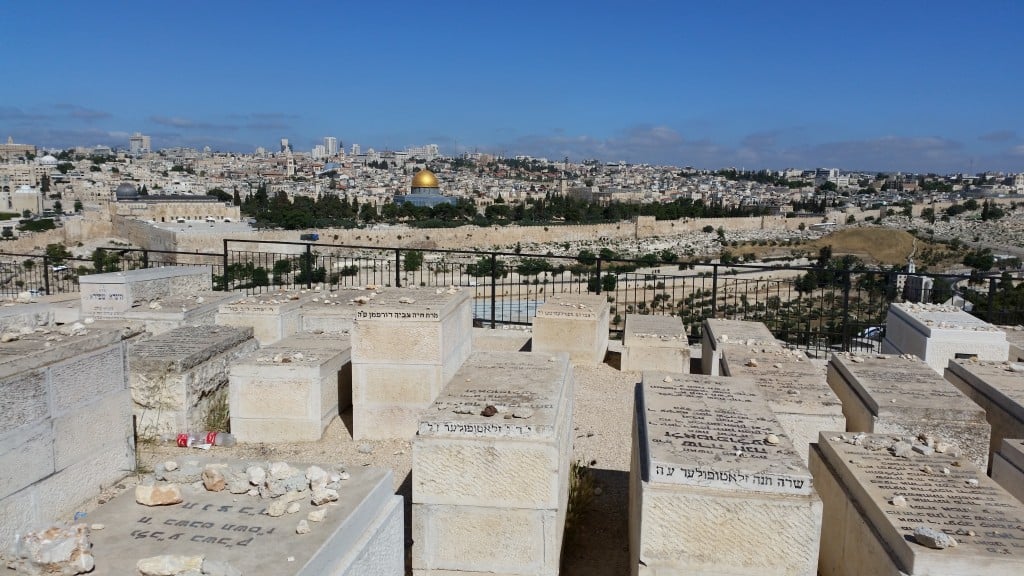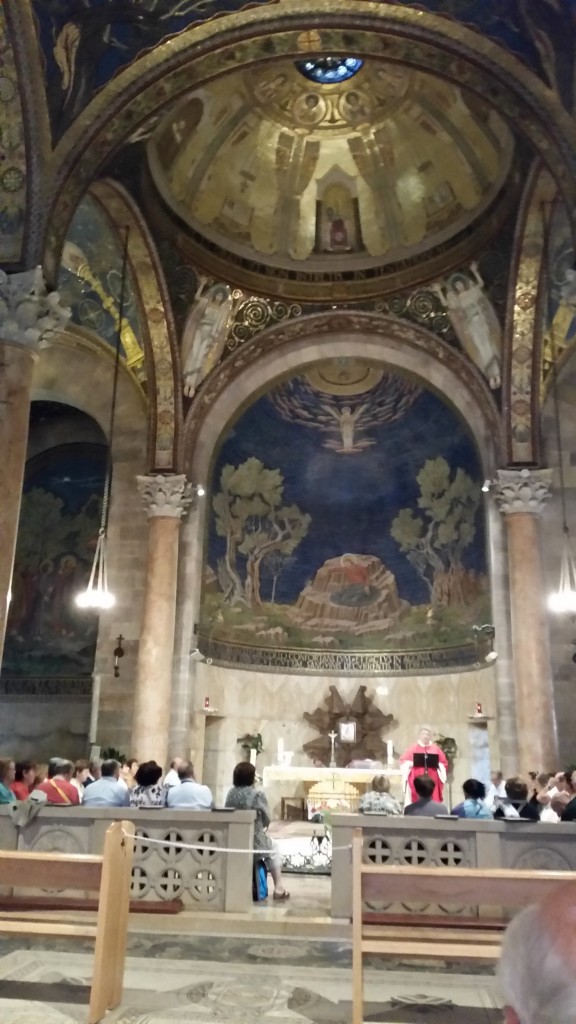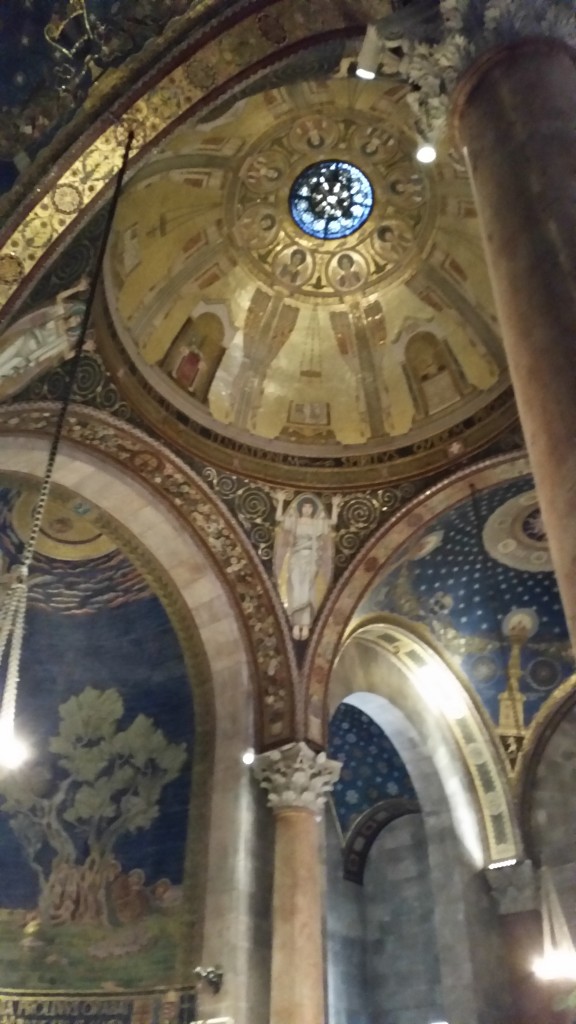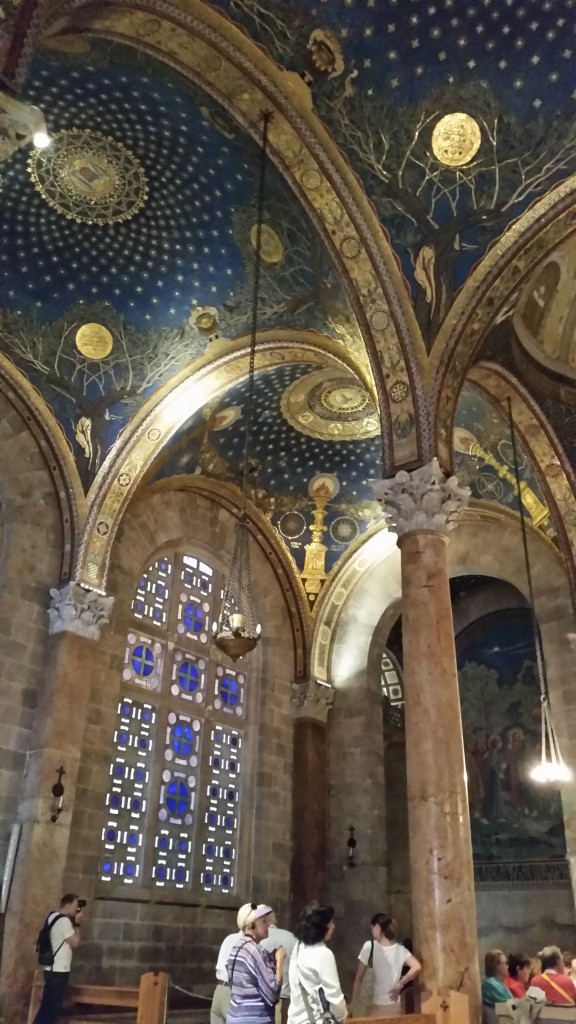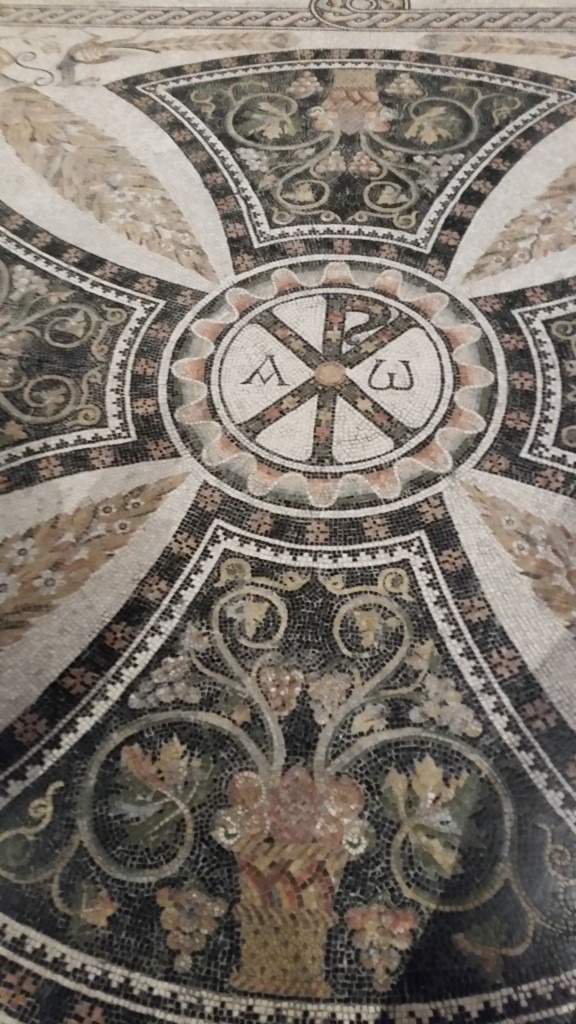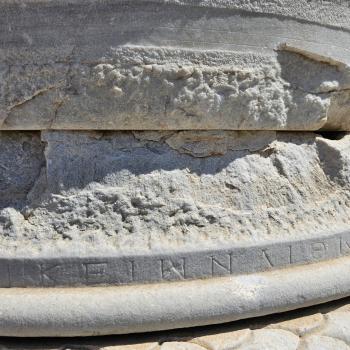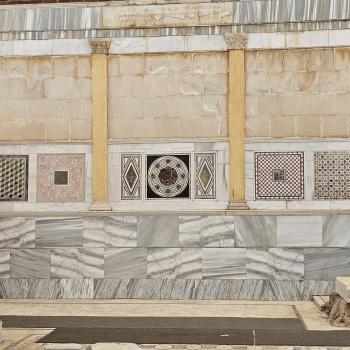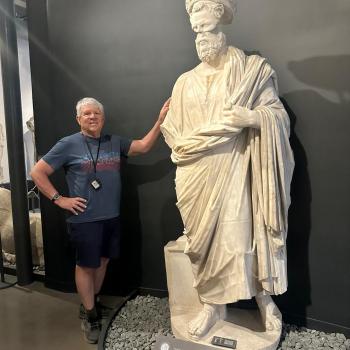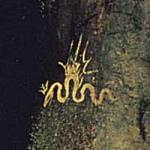Like most tours of the city of Jerusalem, we started at the top of the Mt. of Olives, because of course, that’s where the vendors take the pictures of a group with the Dome of the Rock and the old city lurching in the background. It is a nice view from in front of the Seven Arches Hotel (a sad old place at this point), but the shots taken from lower down the hill at the chapel known as Dominus Flevit (the Lord wept) are just as grand, and closer to the old city as well. Check out these pictures…
The main reason orthodox Jews come to this spot is because of the Jewish graveyard which can be seen in the foreground of the first of these pictures. Here are some better views of it. The Orthodox Jews believe Messiah will come over the Mt. of Olives to Jerusalem, and they want to be first up from the dead in the resurrection to greet him. Won’t they be surprised when he says— “I’m back!!”

Notice the stones of remembrance piled on top of some of these graves, showing they are being honored and remembered by their loved ones.
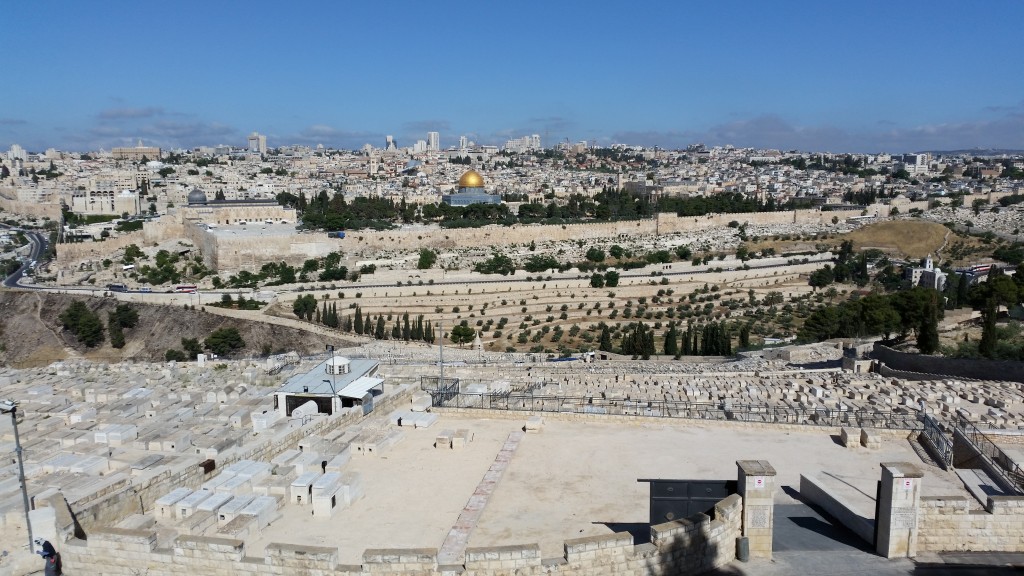
Finally, if you look carefully you will see another graveyard just below the old city walls, the Muslim graveyard near the Golden Gate.
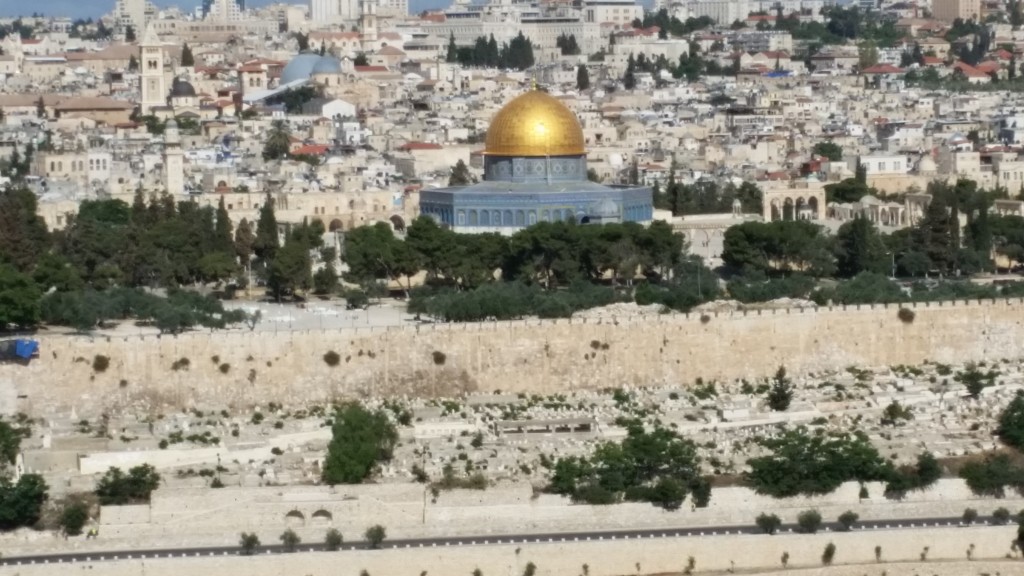
As one descends the Mt. of Olives, there are a series of churches one passes along the way including the Russian Orthodox Monastery of Mary Magdalene on the right, whose golden dome you can just see through the trees…
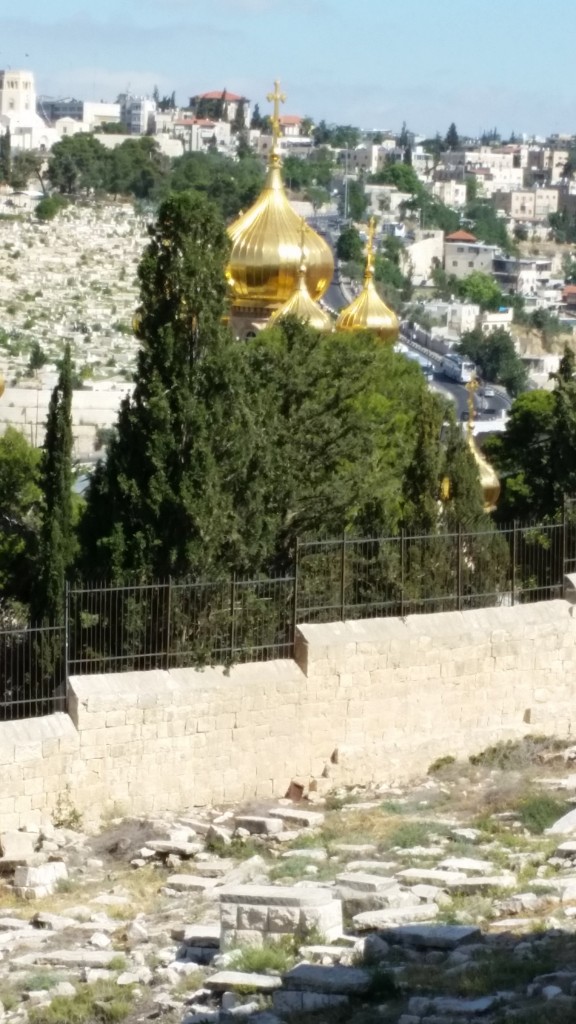
The next church down is Dominus Flevit, a good overlook spot, but also they have a nice collection of ossuaries, or bone boxes, some of which may be Christian ones from the 2nd century A.D. (the cross so far as we can tell was not used as a Christian symbol before then; also I’m not buying the idea that they have Simon Peter’s ossuary. All the most ancient Christian traditions say he died and was buried in Rome. This probably has more to do with claims about holy relics).
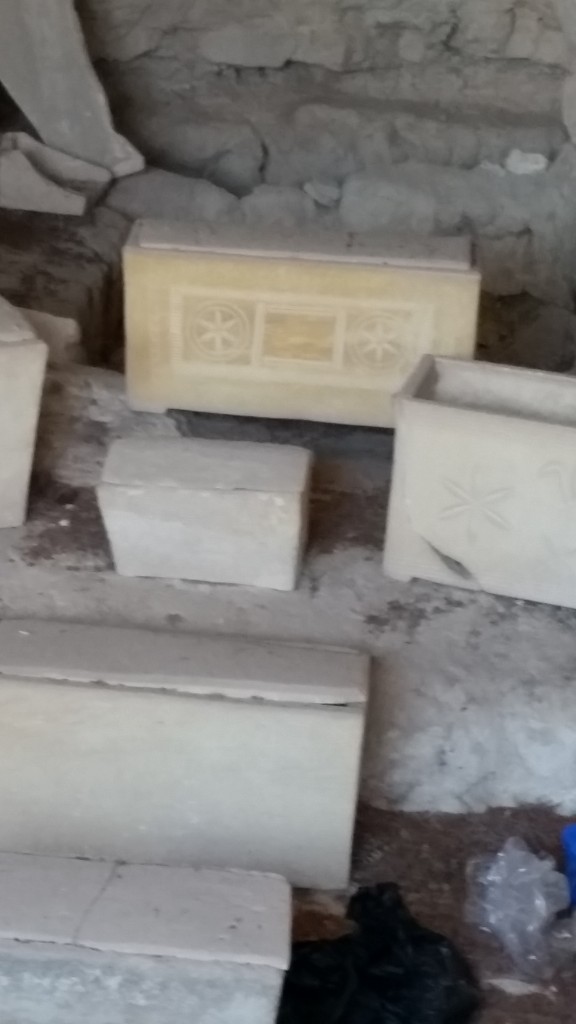
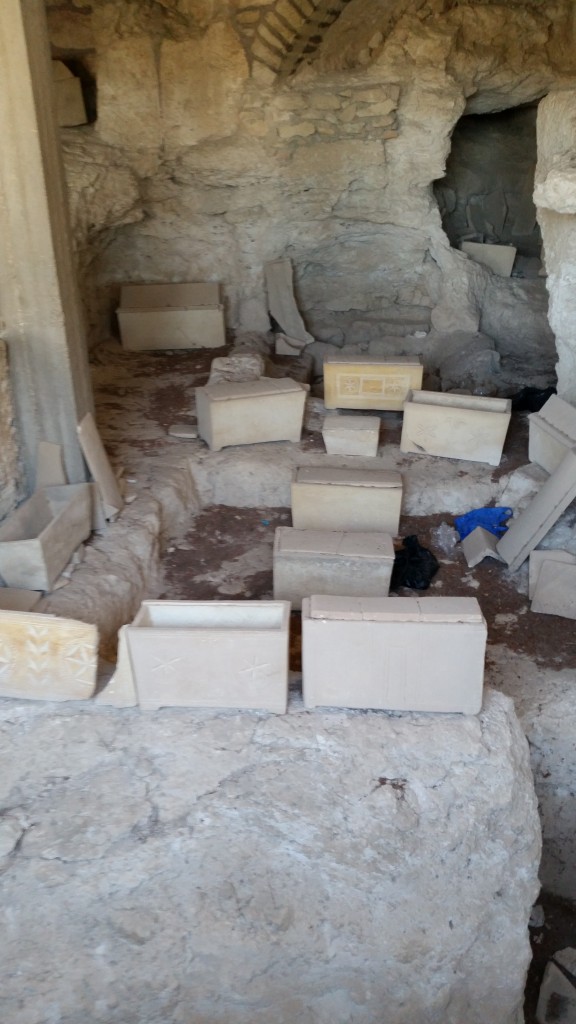
There is a nice view of the Golden Gate entrance into the old city, a gate which has been closed since before the 8th century A.D. Even Sulieman the Magnificent as he built and renovated the old city walls did not mess with this one, because according to tradition, when Messiah comes, he will open those gates (which is also why there is a video cam on this gate 24/7, thinking that if they start to open, messiah must be on the way).
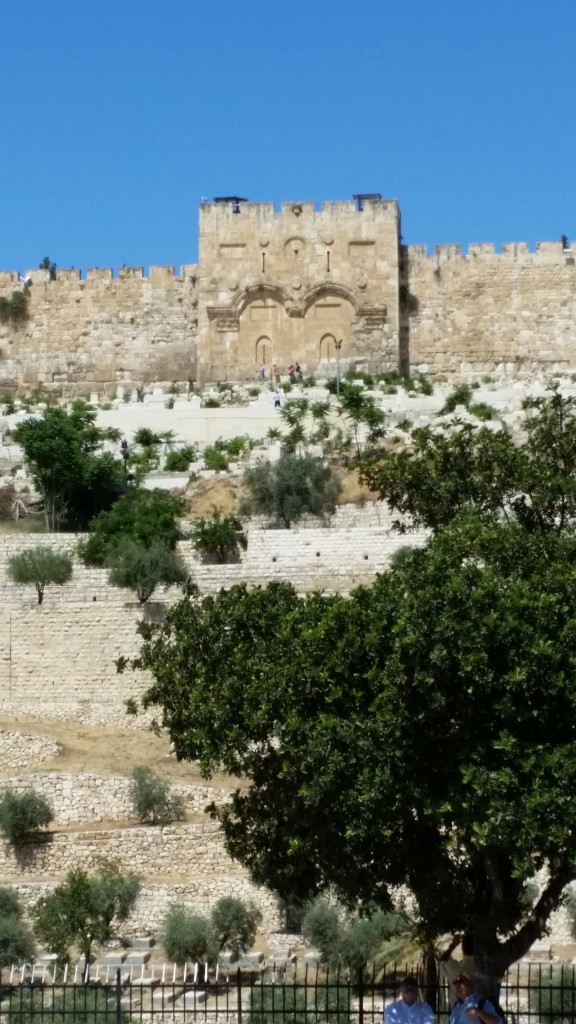
When one arrives at the bottom of the road one arrives, on the right side of the road, at the traditional site of the Garden of Gethsemane. We are not certain this is the right spot, but it could be since they found olive presses here (and that’s what Gethsemane means). The garden today is a more modern one, and none of the olive trees here go back to Jesus’ day, but if you are looking for verisimiltude and a place to meditate on Jesus’ famous prayer in the garden, this is a good spot.
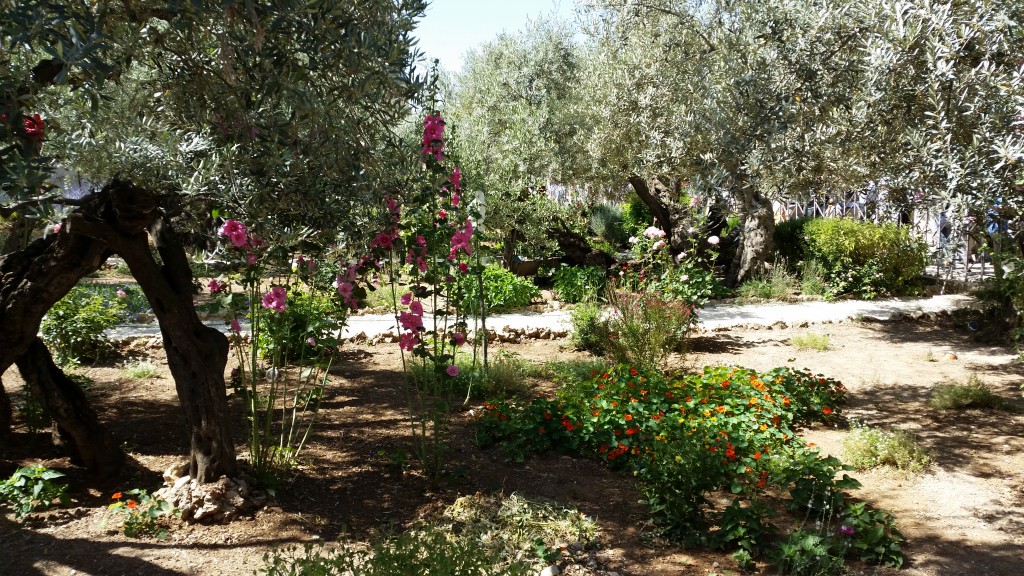
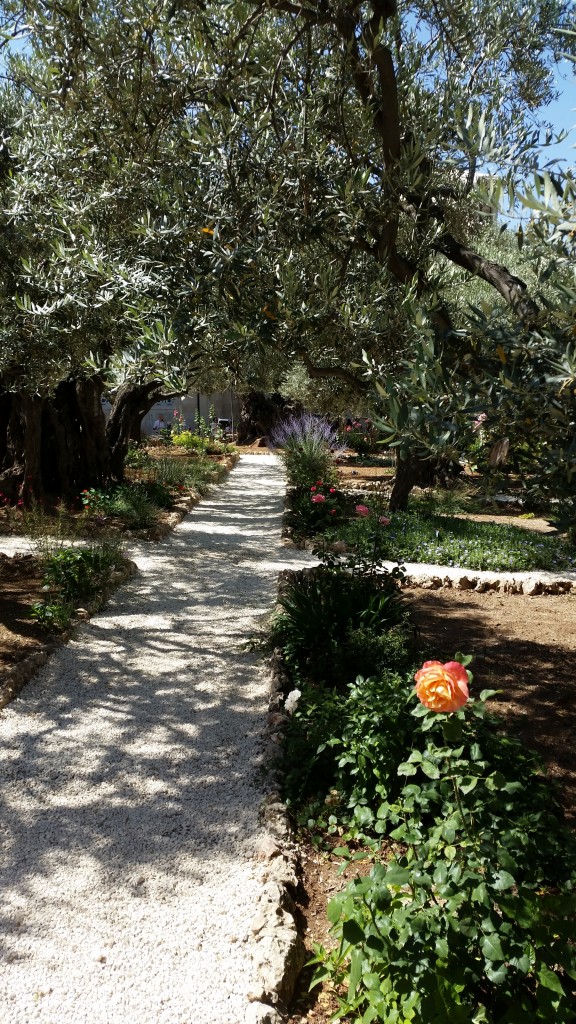
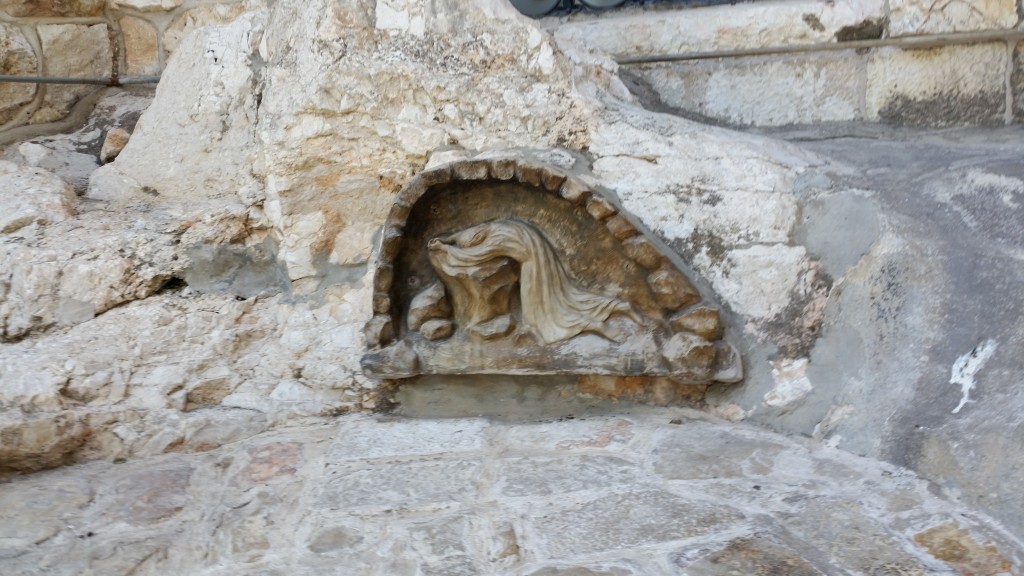
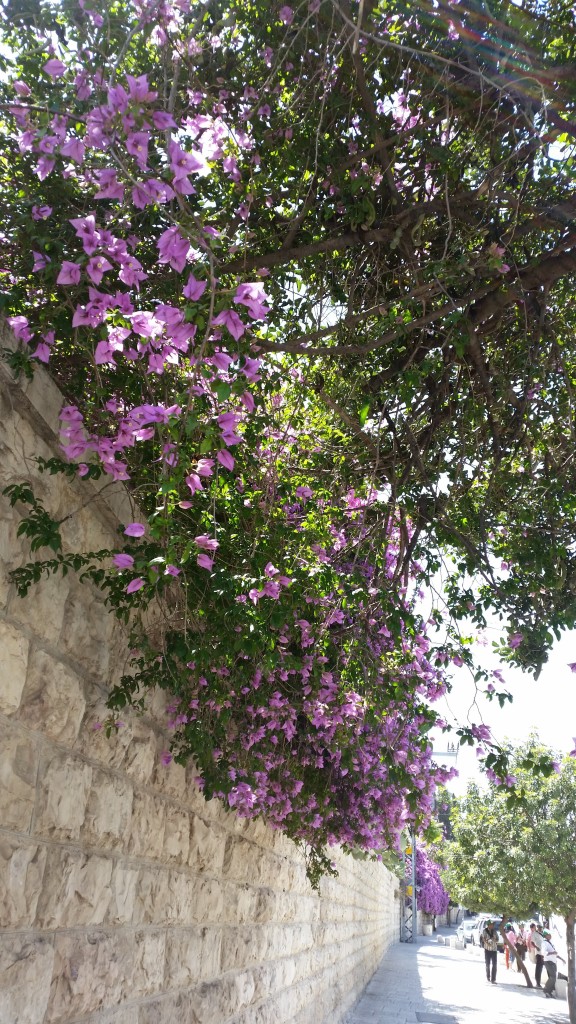
Right next to the garden is the famous church of all nations, built with contributions from many nations after WWI in the 1920s, under the direction of the Italian architect Antonio Barluzzi, who in turn modeled it in part on the gorgeous starry blue domed ancient church in Ravenna….
One of the things about pilgrimages to actually sites where Jesus is likely to have been, is after a while you begin to wonder— Do we properly honor these events? Have we come as bystanders and observers, or as participants in the call to ‘take up your cross and follow me’? Which is it?


